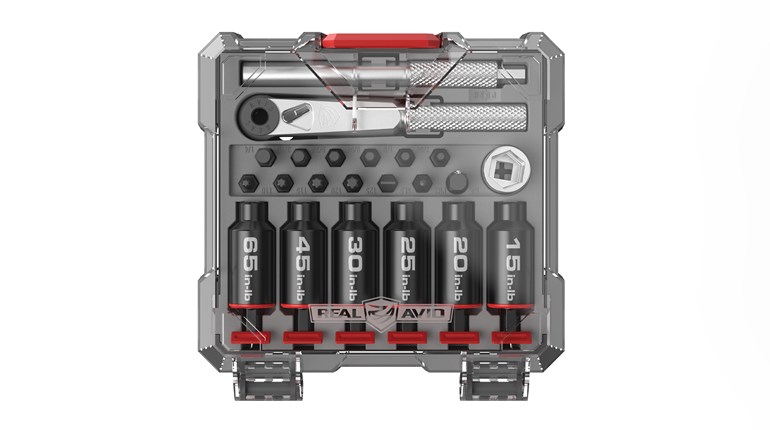
Unfortunately box magazines are still somewhat misunderstood, due to more than a small amount of misinformation. I'm no expert on spring rates, feed angles or metallurgy, but 27 years of shooting magazine-fed rifles has left me with some definite opinions and habits.
Perhaps the most controversial topic is whether leaving magazines fully loaded weakens their springs. I don't know the engineer's answer, but while in uniform I routinely left 5.56 NATO and .308 Win. mags loaded for three to six months before swapping them out with no problems. There are those who adamantly denounce this practice, while others leave their mags loaded far longer. Some form of rotation makes sense to me and I use paint pens to mark my floorplates to help track a roughly 60-day cycle. A complete second set of magazines for your "go-to" rifle will make regular rotations easier. One compromise is to load magazines light by two or three rounds, reducing spring compression slightly for short-term storage. I've tried both ways and see no difference, but I'm sure there are people who could offer contrary experiences.
I never hesitate to use a magazine for prone support when something more solid isn't available, particularly 30-round 5.56 mags. You should always verify this won't cause functional problems, particularly when using older semi-autos with weaker magazine catches and top ejection ports directly above the magazine. I've shot some incredibly small groups using the "magazine monopod." It's a good idea to protect the magazine's bottom when using it this way. Purpose-built floorplate covers work well, so does 100-mph tape. Just remember to leave a small drain hole for moisture to escape.
Polymer magazines have become very popular and much more reliable. They're lightweight, strong, inexpensive and I find the 5.56 versions to be trouble-free, provided they are not overloaded. One of my customers recently reported that his rifle would not allow any magazines to lock in place. I suspected a maladjusted magazine catch, but discovered he packed 31 rounds into each of his polymer mags. The lack of compression space inside the magazines prevented them from locking fully in place with the bolt carrier forward.
Ready access to reloads is something anyone concerned with effective tactical or competitive shooting should be thinking about. There are several methods to bring a spare mag closer to your rifle. A common option is the Redi-Mag from Boonie Packer. This device clamps around an AR's lower receiver, positioning a second magazine on the rifle's left side. The empty magazine may be released independent of the loaded spare, allowing the latter to quickly drop into your hand. There are several Redi-Mag variations available commercially, so ensure you know what you're getting if ordering sight-unseen.
An inexpensive solution is to tape two magazines together (in parallel) with a cardboard spacer between. Benefits include simplicity and a solid base for firing prone. The main objection to this system is that you always have the additional mag hanging off one side or the other. I do not recommend alternating one mag up and one down, Hollywood-style. It looks cool, but is worthless in most situations. Attaching a spare magazine to the buttstock via a pouch is another combat-proven method. Several products exist for fixed-stock rifles, but collapsible and folding stocks require some creative rigging to prevent interference with the stock function or AR charging handles.
Pull tabs are a good way to speed mag extraction from a pouch. The typical loaded-magazine carry position is upside down, allowing more natural reload sequences and a tactile reminder that you're grabbing a full one. The simplest quick-grab method is to attach a tab of 100-mph tape to the bottom, with a couple wraps of tape around it for strength. This method is cheap and the wraps provide spare tape when needed. Routing parachute cord around the baseplate is another method, but care should be taken to preclude bending the base plate outward. Aftermarket devices are also available from Magpul and other companies in several useful variations.
If you're having trouble with 30-round magazines interfering with your accuracy, try capacities of 20 rounds or fewer. You'll be closer to the ground when prone and have less interference with bench tops and rifle rests when seated. A mandatory habit with any detachable magazine is to smack the rear edge against the heel of your hand or thigh after loading. This seats cartridges along the back, aligning them for smooth cycling. Make this a muscle-memory habit, regardless of firearm type.
Finally, don't ignore magazine maintenance. It doesn't take much effort to remove most floorplates, springs and followers. Clean the crud out of the magazine body with a rag or brush, then wipe down the follower and spring. Oil makes a great dirt magnet, so unless you plan to clean your magazines after each use, don't lubricate the springs. If the spring is corroded, bent or noticeably shorter than a new one, replace it. A little TLC will extend your magazine life. Swap out magazines that are damaged and problematic. They're generally the cheapest components to replace in order to get your rifle system running again.




































